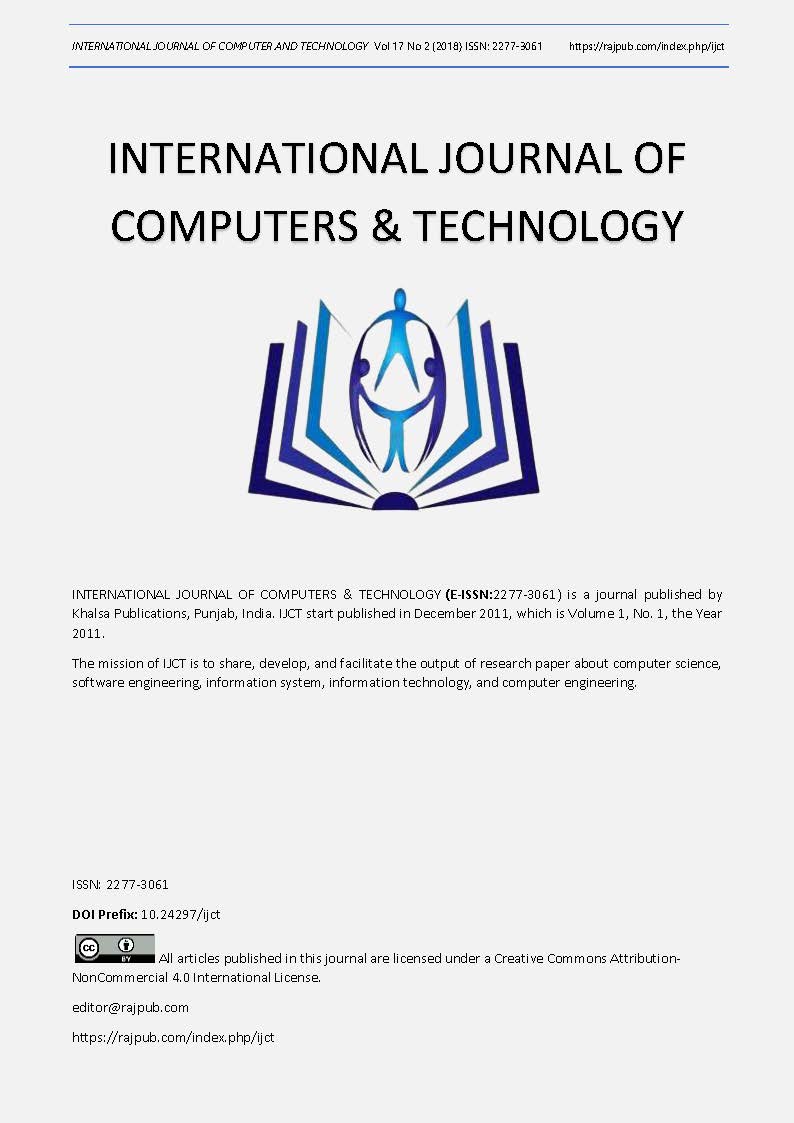Gearing Up Education Towards Industry 4.0
DOI:
https://doi.org/10.24297/ijct.v17i2.7754Keywords:
IIoT, IoE, ICT, Industry 4.0, Digital age, Employable skills, InternetTechnologiesAbstract
Industry has changed creatively with manufacturing systems and technological applications supplementing in the work preparation, reporting variants, methods and resources for effective production management by constant improvements and usage has matured it way to Industry 4.0. Industry has undergone various revolutions up to now, and through cyber-physical systems would communicate, collaborate in real time of the process and product value stream. Technology upgrades will bring optimization in various resource utilization and focus on satisfying customers even over their ever increasingly demand. The gadgetry conveniences would bring the wearable’s and embedded handle large databases for dynamic mining and interpretations obsoleting the necessity of strain in carrying laptops or pads. Innovation would be successful as it facilitates quick product developed self-customized for use at the shortest development time. Student-centered learning, learning consequences will have lifelong erudition where educational institutions will develop robust integrated systems and infrastructure to facilitate learning by doing rather than by the conventional learning. New age of Industry 4.0 will bring in a considerable change in physical world as in the virtual facilitation enabled by digital connect shrinking the distances, removing differences, and conducting real time transfer knowledge and material transfer globally. Being technologically prepared is the need of the time then to wait for the opportunity to push the educational system to change, where the time loss would handicap the economy and younger generations to be forced to compete even with perceived incapable and smaller frugalities.
Downloads
References
DariuszPlinta., (2016), New information technologies in production enterprises, Advanced -industrial engineering, Industry 4.0, Bielsko-Bia?a, pp. 7-20.
MiroslavMindas., SlavomirBednar., (2016), Mass customization in the context of industry 4.0: implications of variety induced complexity, Industry 4.0, Mass customization, Complexity, Demand, Variety, Advanced industrial engineering, Industry 4.0, pp.21-39.
S.M Sackey., A. Bester., D. Adams., (2017), Industry 4.0 learning factory didactic design parameters for industrial engineering education in South Africa, South African Journal of Industrial Engineering, Vol 28(1), pp. 114-124
Umachandran K., & Ferdinand-James D., (2017), Affordances of Data Science in Agriculture, Manufacturing, and Education (Chapter 2). In SharvariTamane (Ed.), Privacy and Security Policies in Big Data, PA, USA: IGI Global.
Foresight., (2013), The future of manufacturing: A new era of opportunity and challenge for the UK: Summary Report, The Government Office for Science, London.
European Commission., (2013), Factories of the future - Multi annual roadmap for the contractual PPP under Horizon 2020, https://www.scribd.com/document/271903700/Factories-of-the-Future-2020-Roadmap#
Della Corte V., Sciarelli M., (2012), Cancoopetition be source of competitive advantage for strategic networks? Cooperate Ownership & Control, 10(21), 363-379.
Krishnan Umachandran., (2018), Rolling mass of change, Innovation project, https://www.researchgate.net/project/Innovation-70/update/5aa6077b4cde266d5890c3d5
Hishida, Mitsuhiro., (2015), Japan: Smart Japan ICT Strategy, Internal Affairs Ministry, https://www.crcom.gov.co/recursos_user/Documentos_CRC_2015/Eventos/10taller/10Hishida.pdf
ESS., (2010), Report of the export panel for the review of the europeanstandandard system : Standardization for a competitive and innovative Europe: a vision for 2020“, February 2010, pp.45, http://www.anec.eu/attachments/Definitive%20EXPRESS%20report.pdf
European Commission., (2017), High-Tech Leadership Skills for Europe, pp.132, http://eskills-scale.eu/fileadmin/eskills_scale/all_final_deliverables/scale_e-leadership_agenda_final.pdf,
Jur?i?, K. Umachandran, V. Della Corte, G. delGaudio, V. R. Aravind, D. Ferdinand-James., (2018): Industry 4.0: Unleashing Its Future smart Services, CIET 2018, Split, Croatia.
Krishnan Umachandran.,Valentina Della Corte., Mohamed MohamedTolba Said., (2018), Innovation in business development, In the book by Anna Cierniak-Emerych, SzymonDziuba, AgataPietro?-Pyszczek, AndrzejBodak., (2018), Enterprise and human resource management as areas of innovations, Edition: 1, Chapter: 1, Publisher: OficynaWydawniczaStowarzyszeniaMened?erówJako?ciiProdukcji. Al. ArmiiKrajowej 19b lok. 504z, 42-218 Cz?stochowa,









